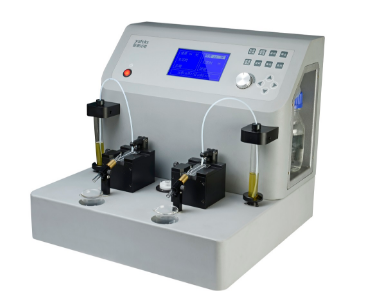Author: Michiko
Date: 2019/10/16
There are many types of ferrographs that have been developed at home and abroad, and they have proposed different classification methods from different angles.
Since the magnet device is the core component of the ferrograph, it can be divided into a permanent magnet type ferrograph and an electromagnetic type ferrograph according to the working principle of the magnet. According to the machine state monitoring method, it can be divided into offline ferrograph and online ferrograph.
According to the need to realize the quantitative and qualitative analysis functions of the iron spectrum, it can be divided into analytical Ferrograph, direct reading Ferrograph, Dual Slide Analytical Ferrograph, etc., all of the above three Ferrographs belong to offline Ferrograph.
In addition, according to the classification principle of the iron spectrometer, it can be divided into a rotary ferrograph and a stationary ferrograph.
The ferrograph is prepared by diluting the analytical oil sample obtained from the lubrication system into a glass tube, and transporting the analytical oil sample to the upper end of the glass substrate placed above the magnetic field device through a micropump, and mounting the glass substrate.
Forming a certain inclination angle with the horizontal plane to form a gradually increasing high-intensity magnetic field in the direction of the oil flow, and at the same time facilitating the downward flow of the oil along the inclined substrate, and discharging the waste oil cup from the lower end of the glass substrate through the draft tube in.
The magnetizable metal abrasive particles in the oil sample are deposited on the glass substrate in an orderly manner according to the size of the abrasive particles under the action of high gradient magnetic force, liquid viscosity resistance and gravity when flowing through a high gradient magnetic field. A chain arrangement is formed perpendicular to the flow direction of the oil sample.
After analyzing the oil sample flowing from the substrate, the substrate was washed with a tetrachloroethylene solution to remove residual oil, and the abrasive particles were fixed on the substrate to prepare an iron spectrum for observation and detection.
The principle of the ferrograph is to separate the neodymium magnetic abrasive grains in the lubricating oil by a high gradient magnetic field and deposit them on the glass sheets in order of their particle size. Then, the shape and size of the abrasive grains are observed by a two-color microscope, and component analysis is performed. The percentage of the abrasive coverage area can also be determined by a reader.
YTF-8 Dual Slide Analytical Ferrography for sale



